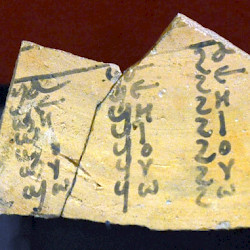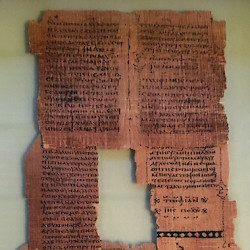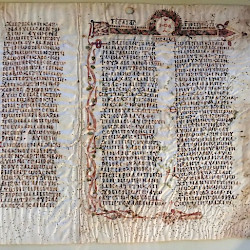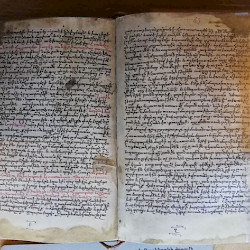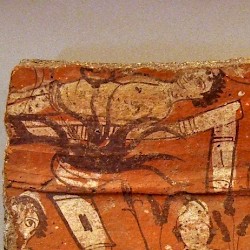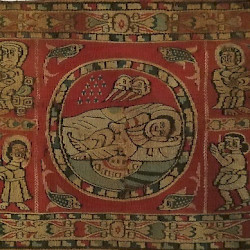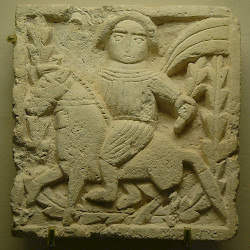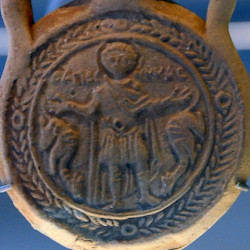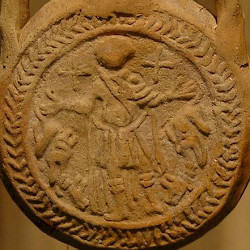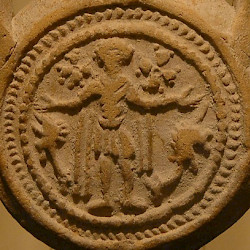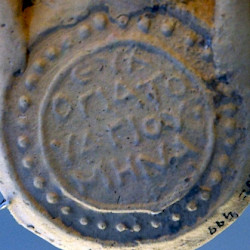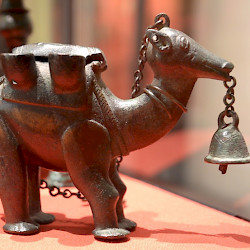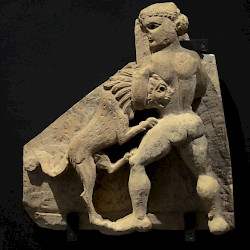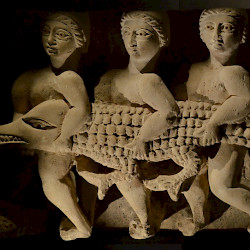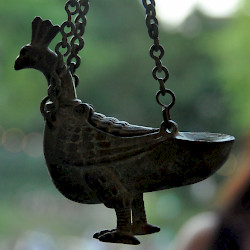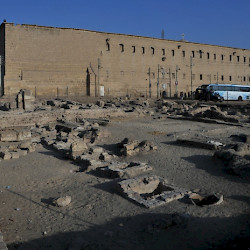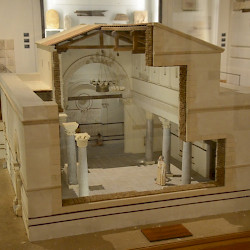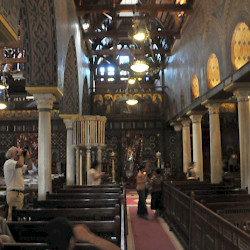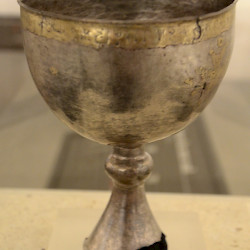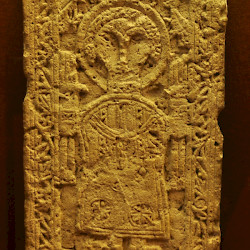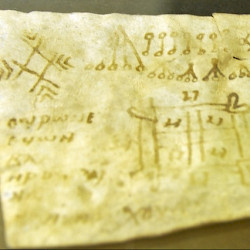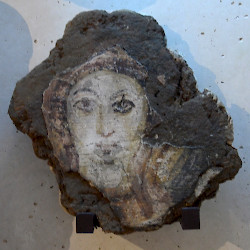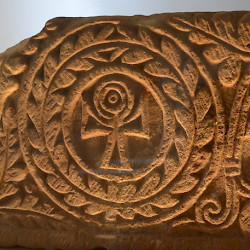Copts
Copts: Name for the Christian population of Egypt and Nubia in Late Antiquity.
Rediscovery
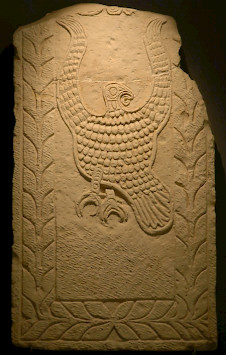
Today’s Christians in Egypt and Sudan speak Arabic, but their liturgical language is Coptic. In the nineteenth century, Jean-François Champollion used this liturgical language to understand ancient Egyptian, correctly assuming that Coptic was a late form of the language spoken along the Nile in the three millennia BCE.
Because there was linguistic continuity, Coptic, Roman, Ptolemaic, and pharaonic antiquities were collected by the same scholars and museums. In other words, the civilization of Christian Egypt was discovered together with the civilization of pharaonic Egypt. The same group of scholars used the same methods, which can described as looting and tomb raiding.
Name
The word qibt, “Copt”, has had several meanings. Originally, it referred to the people living in Egypt. This word was an exonym, given to the inhabitants of the Nile valley by the Greeks, who called the ancient nation Aigyptoi. This word was in turn derived from Hut-ka-Ptah, the name of the sanctuary of the god Ptah in Memphis (“Enclosure of the ka of Ptah”).
In Late Antiquity, nearly all inhabitants of Egypt were Christians, although there were Jewish and Manichaean minorities as well. After the Arab conquest in 641 CE, the word “Copt” started to indicate the Christians of Egypt, who did not speak the language of the new masters.
Language and Literature
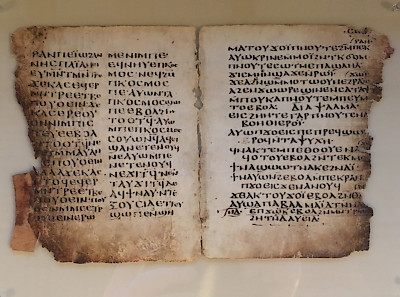
The Coptic language was written in an alphabet that consisted of the twenty-four signs of the Greek alphabet, to which seven signs from the Old-Egyptian Demotic script were added. For the first time, the vowels of the ancient Egyptian language were recorded.
There were two main dialects, which are called Sahidic (or Thebaic) and Bohairic (or Memphitic), spoken in Upper and Lower Egypt. In the course of the fifth century, they replaced three local dialects: the archaic Akhmimic, the Sub-Akhmimic (or Lycopolitanic) of the Gnostic texts, and Oxyrhynchic. There was also a local dialect that continued to be in use, Fayyumic. As a spoken language, this dialect disappeared in the tenth century, while the two main dialects remained in use until the nineteenth century.
Coptic literature is mostly Christian, although there are some Manichean texts as well, while there are also Gnostic texts (e.g., the famous Gospel of Thomas). The great majority of Coptic literature, however, consists of Biblical texts, apocrypha, ecclesiastical histories, and patristic texts, often translated from Greek. Because Coptic Christianity shares a Christology with Armenian Christianity, it comes as no surprise that Coptic texts have been translated into Armenian.
There are also legal documents, letters, magical texts, and amulets.
Christianity
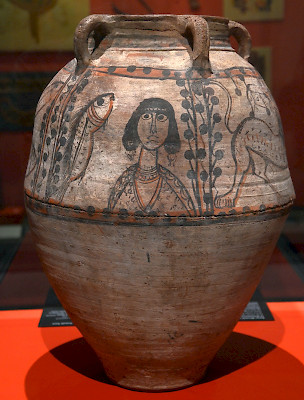
Christianity had arrived in Egypt quite early, although the circumstances have not been recorded. In the second century, it became one of the main centers of the new faith, with many new ideas, some of which were labeled “Gnostic” by other Christians. Several important writers were Egyptian (e.g., Valentinus, Clement of Alexandria, Origen), while the new monastic way of life originated in the Libyan desert, perhaps influenced by the Gymnosophists.
A first division between Egyptian Christianity on the one hand and the beliefs of the other parts of the Roman Empire on the other hand was Arianism, a debate that was eventually laid to rest during the Council of Nicaea (325) and the Council of Constantinople (381). The fifth century witnessed another, more lasting division. During the Council of Chalcedon (451), the Coptic and Armenian churches, which maintain that Christ's divine nature overwhelmed his human nature, separated from the church of Constantinople and Rome, which maintain that Christ's two natures were never fused, changed, divided, or separated.
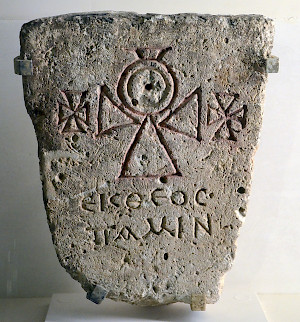
Apart from these theological issues, the Coptic church, led by the patriarch of Alexandria, differs from Greek and Western Christianity in several aspects. The religious calendar is the pharaonic one, with twelve months of thirty days and five or six leap days. Coptic Christians stress the importance of dietary laws; fasting is important and eating meat is discouraged. Magic, curses, spells, and amulets have remained in use.
On the other hand, there are important similarities, like monasticism (which spread from Egypt to the West), pilgrimages, and the cult of the saints (martyrs and monks). Saint Menas is especially important. Continuing a custom that dated back to pharaonic times, Coptic pilgrims took water from his tomb back home; these round bottles have been found all over the ancient world, from Ireland to Sogdia.
Coptic Art
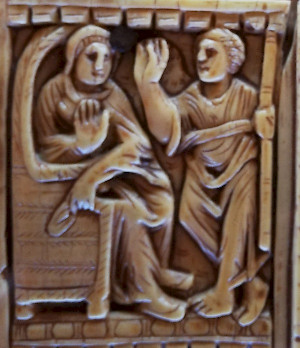
One of the remarkable aspects of Coptic art is that in the desert tombs, textiles have been preserved. When Coptic tunics, hangings, and cloth were for the first time brought to Europe in the nineteenth century, they created quite a sensation because the many colors were unexpected. Since demand for these objects was high, the discoverers often cut ancient tunics and sold them to different collectors.
One characteristic of Coptic art is that human figures with remarkably big heads look directly at the spectator. The frontal composition of the faces and the stress on the eyes are reminiscent of mummy portraits and Byzantine icons. We also find cheerful geometric patterns, animals (peacocks, horses, fish, dromedaries, hares…) and motifs inspired by vegetation (trees, grapes…). Other symbols are the Phoenix, sea nymphs, and centaurs.
Christian motifs were popular as well. We have representations of the meeting between Christ and John the Baptist and pictures of saints. The ankh, the old pharaonic symbol of life and eternity, was converted into a Christian symbol for the hereafter.
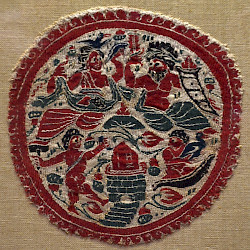 Antinoopolis, Coptic textile, Nilotic scene (including nilometer) |
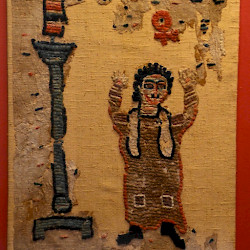 Antinoopolis, Coptic textile, Praying man with candelaber and ankh |
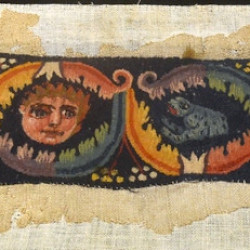 Coptic Embroidery |
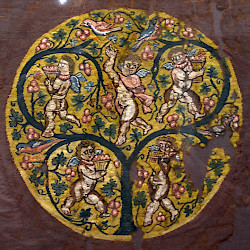 Egypt, Byzantine textile, Erotes picking grapes |
Crisis
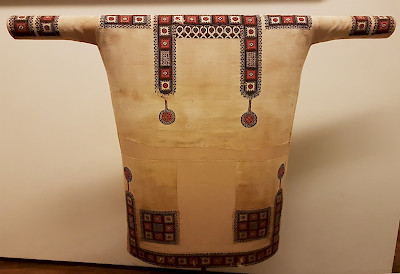
The religious conflict between the adherents of the Chalcedonian Creed (i.e., the Byzantine government) on the one hand and the Egyptian populace on the other hand caused tensions, which could be controlled but smoldered during the late fifth and sixth centuries. In the early seventh century, the Byzantines lost control of Egypt to the Sasanian Persians, restored order, and lost it again when the Copts supported the invading Arab armies (641 CE).
A new period started, in which Coptic was slowly replaced by Arabic, and Coptic art became less expressive. Many people would accept Islam as religion and the Coptic language was replaced by Arabic. Coptic was only used for liturgical purposes.
